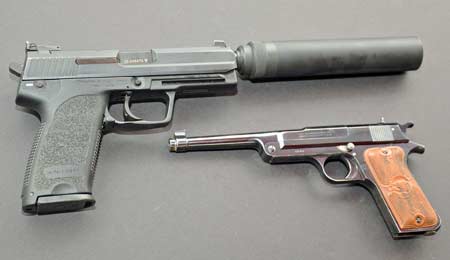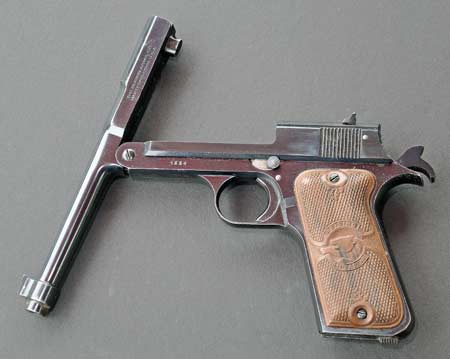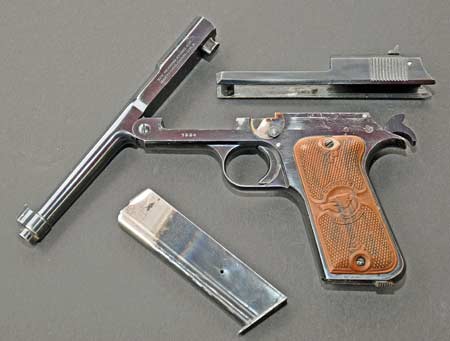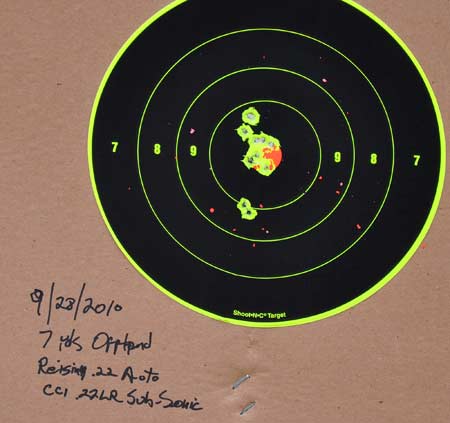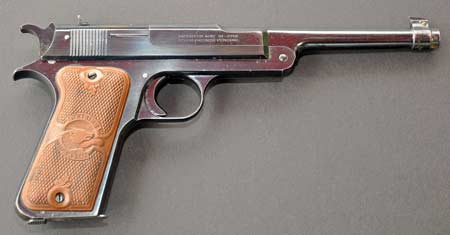The Reising .22 Semi-Auto Pistol
A Bit Of Handgun History
Some 40-plus years ago I had occasion to throw a stop on a car when I was a cop, the end result of which was the discovery of a Reising Model 50 .45 ACP sub-machinegun with two loaded 20-round magazines. After adjudication the Reising found its way into my department’s weapons locker, which gave me a chance to (finally!) play around with it a bit.
After shooting and handling this sub-gun for a few hours, a couple of things were readily apparent: (1) It didn’t work or handle all that well, and (2), It was understandable why so many Reisings were tossed into the Pacific by scores of WWII Marines. Placing it back in the weapons locker, I hung a big sign on it saying “NOT for use in emergencies!”
Fast forward about 20 years to the time I bought a customer’s Reising .22 semi-auto pistol. I’d heard and read about these guns before, but had never before met one in person. I was curious as to how it would fare compared to the subgun of the same name.
The Reising pistol was the product of the fertile mind of Eugene G. Reising, a design engineer employed by Colt in the very early twentieth century. Reising worked directly for John Browning during the development of the 1911 pistol. Leaving Colt and venturing forth on his own, he received a patent for a new .22 pistol on May 16, 1916, and formed the Reising Arms Company in Hartford, CT in 1920, moving it to New York City in 1922.
Reising obtained an updated patent (U.S. Patent #1395141) on his .22 pistol on October 25, 1921, and his factory proceeded to produce approximately 5,000 of these handguns. The pistol’s popularity was evidently not strong enough for the company to maintain financial solvency, causing it to close its doors in 1924 after only four years of production.
Reising’s career was a long and checkered one. He filed over 60 firearms-based patents during his lifetime. And, according to a 1925 New York Times article, he served a 15-month term at a correctional facility on Welfare Island for violating New York’s infamous “Sullivan Act.” Eugene Reising died in Worcester, MA, on February 21, 1967, at the age of 82.
It’s A Bear!
The Reising pistol itself is unusual and unique. It has an overall length of 9 ¾”, a tapered barrel measuring 6 ¾”, a height of about 5″ and weighs about two pounds. Its magazine holds 12 .22 LR cartridges. It’s of single-action, exposed-hammer design and has no exterior safety: the hammer’s half-cock notch, a magazine disconnect and common sense provide the only safety features on the gun. Its barrel is affixed by a toggle system at the front of the frame, pinned to the barrel at its approximate mid-point, reminiscent of the Beretta Jetfire/Tomcat family.
On the model in my possession a button on the left side of the frame swivels a half moon-shaped release to unlock the barrel assembly. There’s also a variation using a push button release instead. The brown plastic grip panels are emblazoned with the name “REISING,” a picture of a bear’s head, and the words “IT’S A BEAR” under the bear logo.
This solid-steel handgun has a very pleasing heft to it. The grip angle is very much 1911-based, giving the pistol a comfortable and familiar feel. The frame-mounted magazine release is located behind the magazine base plate. The Reising pistol’s weak point appears to be its slide. Very thin and narrow in its front extension, it doesn’t tolerate high-velocity ammo. It’s a standard velocity-only gun.
Casual Shooting
I spent an afternoon putting a few hundred rounds of CCI Sub-Sonic .22 LR hollow points through the pistol. Not a single malfunction was to be had. The Reising’s low-silhouette design allows for a straight-forward relationship between the magazine and the chamber, so rounds go in easily. There’s virtually no feed ramp whatsoever, as incoming rounds sit flat in the magazine and simply glide straight into the chamber.
The trigger broke at a crisp 3 ¾ pounds, making the gun exceptionally easy to shoot accurately. After warming up, I set a 6″ bullseye at seven yards for a serious try. Telling myself that this target, good or bad, would be the one “for the record,” I put 12 off-hand rounds into it. All went inside the ten-ring, with the majority massed in the center. Not bad for mid-60 year old eyes and a 90 year old gun.
With no slide lock, the tip-down barrel assembly proved to be an asset. Tilting the barrel renders the gun instantly safe, much like a break-action shotgun. I like being able to visually confirm a firearm’s “safe” condition when benched. Disassembly is simple. Tilt down the barrel, move the slide forward and remove.
Eugene Reising may have made one of the most unpopular U.S. sub-machineguns in history. But his little, low-production .22 pistol was a monument to his firearm-design prowess. Reising himself was a competitive pistol shooter, accumulating a great many awards in his long life. He designed and manufactured a handgun that was simple, accurate — even elegant. It was one of his biggest triumphs.

